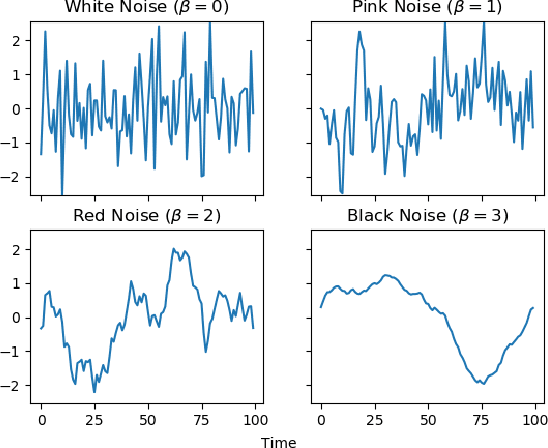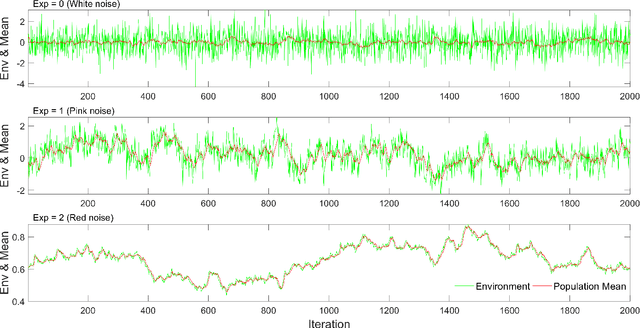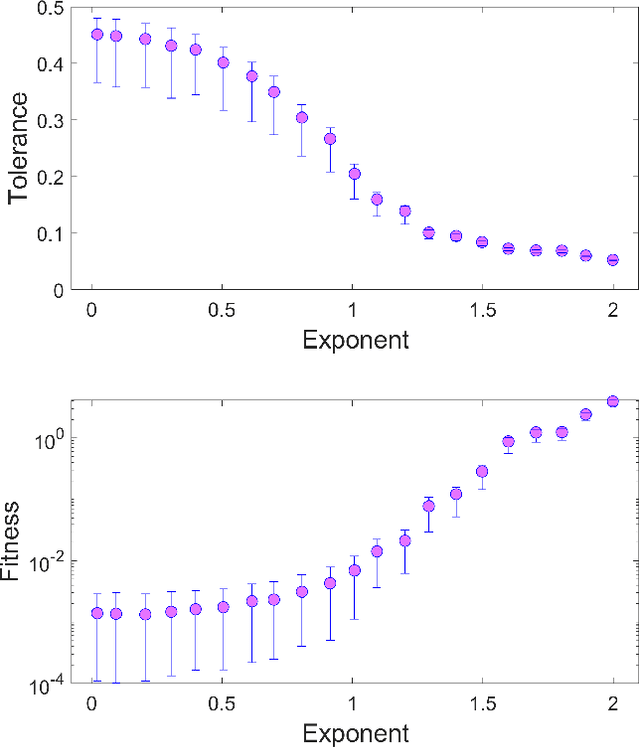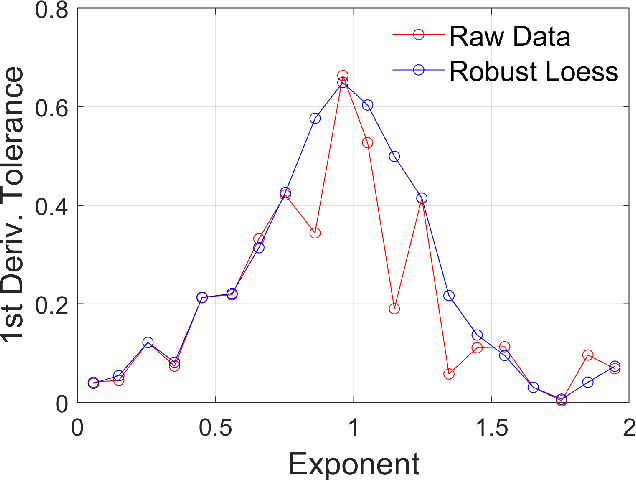Fiona Polack
Coloured noise time series as appropriate models for environmental variation in artificial evolutionary systems
Jun 29, 2020



Abstract:Ecological, environmental and geophysical time series consistently exhibit the characteristics of coloured (1/f^\b{eta}) noise. Here we briefly survey the literature on coloured noise, population persistence and related evolutionary dynamics, before introducing coloured noise as an appropriate model for environmental variation in artificial evolutionary systems. To illustrate and explore the effects of different noise colours, a simple evolutionary model that examines the trade-off between specialism and generalism in fluctuating environments is applied. The results of the model clearly demonstrate a need for greater generalism as environmental variability becomes `whiter', whilst specialisation is favoured as environmental variability becomes `redder'. Pink noise, sitting midway between white and red noise, is shown to be the point at which the pressures for generalism and specialism balance, providing some insight in to why `pinker' noise is increasingly being seen as an appropriate model of typical environmental variability. We go on to discuss how the results presented here feed in to a wider discussion on evolutionary responses to fluctuating environments. Ultimately we argue that Artificial Life as a field should embrace the use of coloured noise to produce models of environmental variability.
 Add to Chrome
Add to Chrome Add to Firefox
Add to Firefox Add to Edge
Add to Edge